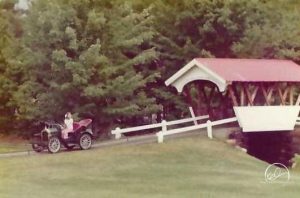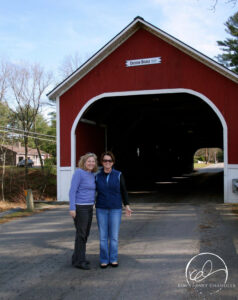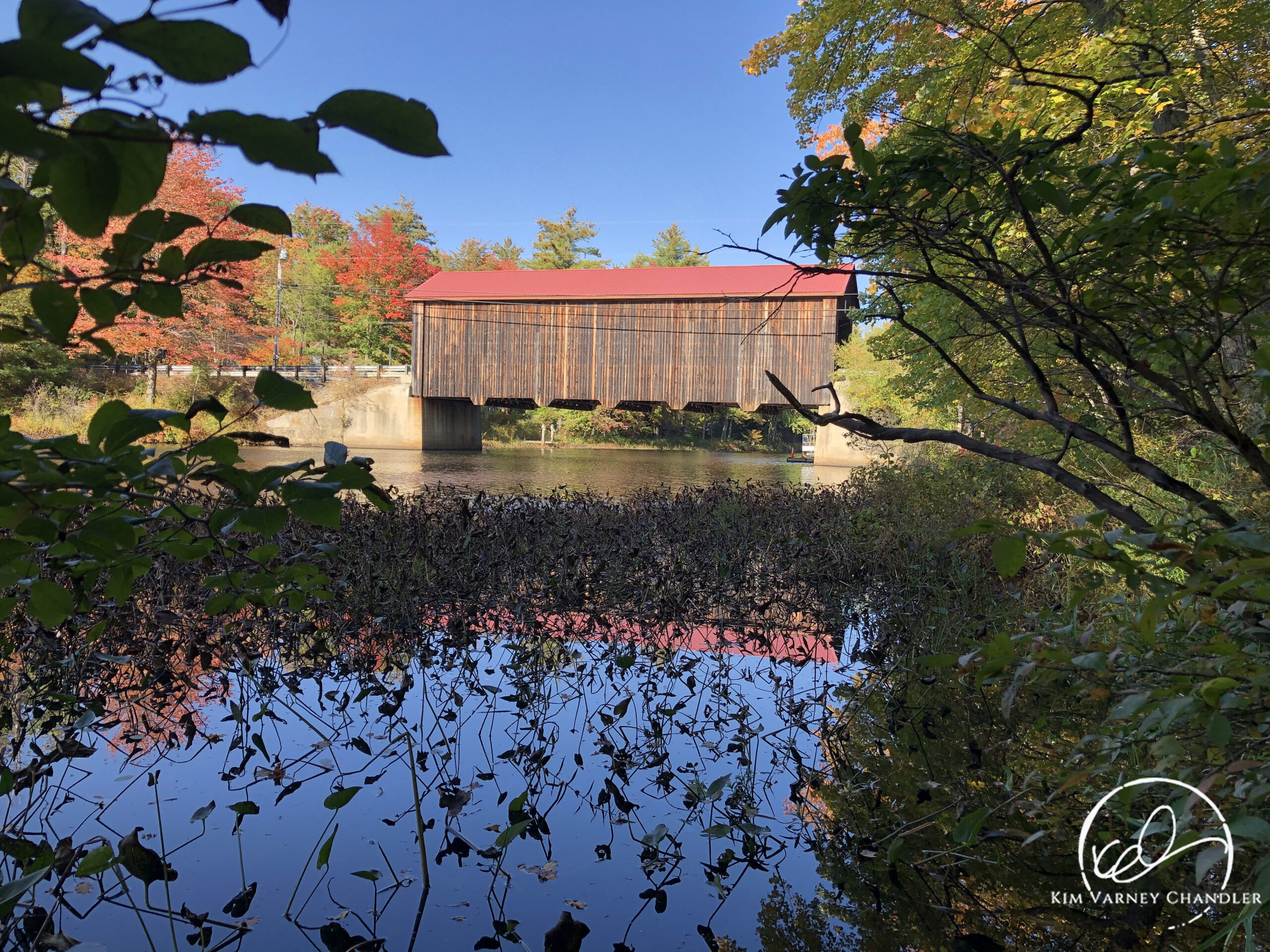Excerpt from Covered Bridges of New Hampshire, © Kim Varney Chandler, 2022
My love of history began by chance, really, in a college course that I selected to fulfill a general education requirement. Professor Charles Clark’s New Hampshire History course sparked a lifelong desire to research the places I live and the people who came before me. But rather than change my major from the drudgery of business administration to something I actually enjoyed, I settled on a history minor instead. I’ve been researching ever since. I’ve spent inordinate amounts of time tracing genealogy, finding property deeds, and reading history books. I haven’t done much with this information except repeatedly share it with unsuspecting friends and family. I’m that person.
Although I’ve lived most of my life in New Hampshire, except for the ten years I spent existing as a Yankee in Virginia, I didn’t know all that much about covered bridges. Before I moved south of the Mason-Dixon, I lived on the seacoast where covered bridges had been largely erased from the landscape decades before I was born. In 1981, the last covered bridge in Strafford County was destroyed by arson, and I don’t remember a thing about it. But then again, I was only twelve.

I don’t recall visiting any covered bridges. I knew about covered bridges from trips “up north” where my parents would take me during holiday weekends or summer vacations. But after a long day of riding the rides at Story Land or feeding the bears at Clark’s Trading Post, we would invariably end up at the overwhelmingly exciting gift shop where all the items seemed to be adorned with ubiquitous symbols of New Hampshire – the Old Man of the Mountains, a moose, a loon, and a covered bridge. Those images appeared on tee shirts, coin purses, pencil boxes, souvenir spoons, decorative plates, keychains, flag pennants, and other kitschy and unnecessary trinkets that my over-tired self simply had to have! While my parent’s fiscal sense usually overruled my wishes, I vaguely remember having both a coin purse and a pennant.
In 2012, my husband, Marshell, and I moved back to New Hampshire and settled in the state’s southwest corner. In what may have been a subliminal attempt to repair the Yankee roots I had unintentionally diluted in the south, we moved to one of the most quintessential New England towns possible: Hancock. The small, historic village is home to all the traditional hallmarks of old New Hampshire: a white-washed, steepled meetinghouse, a town common complete with a bandstand, the state’s oldest continuously operated inn, a market, and, of course, a covered bridge.
The Hancock-Greenfield Bridge, or County Bridge as it’s called here, is one of the more utilitarian bridges in New Hampshire. Still, nonetheless, it is a beautiful wooden structure that suddenly appears around the corner on a paved and rather busy road. Each time I approach the bridge in my vehicle at 35 miles per hour, it feels wrong to drive over it, like touching artifacts behind the rope in an historic home. The contrast continues to give me pause. Surely it’s against the rules.

As we explored our new surroundings, I was pleased to learn that the Monadnock region was home to several more covered bridges. When our Virginia friends visited, we promptly drove them to Winchester and Swanzey to see these newly discovered treasures. As we photographed the bridges from all angles and took photos of ourselves smiling in front of the portals, I had no idea how pivotal this moment would eventually become.
Shortly after that, I found the publication New Hampshire Covered Bridges: A Link with Our Past by Richard G. Marshall. This 1994 book provides brief histories of the historic covered bridges in New Hampshire, of which I learned there were 54. A list! I like lists, so I made this a personal challenge. I would systematically photograph all the covered bridges in the state.
I began right away. I traveled to Cornish, Hopkinton, Warner, Langdon, Andover, Bradford, and Newport, capturing images of these bridges. Then my enthusiasm waned, and my project took a back seat. In 2017, as we were driving home from a weekend in Wentworth’s Location, we took a back way home and happened by a few covered bridges. More photos for my list! Then I lost steam again.
Until March 2020.
Forced to slow down and unable to go anywhere, I found myself thinking once again about the covered bridges. I channeled my anxiety about the pandemic into creating a spreadsheet of bridge facts, organizing my photos into galleries, and making a list of the bridges I needed to visit. I ordered more books on New Hampshire covered bridges and read them all. When the world cautiously reopened that summer, Marshell and I and our chocolate lab, Pemi, hit the road. It’s pretty easy to social distance at a covered bridge, especially in the Great North Woods.
But by August, the same old compulsion took over. I had to know more. What exactly am I looking at? Why do some bridges look like garden lattice and some don’t? Where did the name come from? Why is this bridge still here? What stories can it tell? I wanted a complete portrait of these historic structures, not just a photograph.
So, true to form, I researched New Hampshire’s covered bridges. You can read all about it here.


Leave a Reply